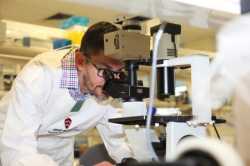Author Interviews, Dermatology, FDA, Melanoma, NYU / 19.12.2015
FDA Proposes Restricting Sunlamps To Adults: Tanning = Skin Damage
MedicalResearch.com Interview with:
Dr. Jennifer Stein MD
Associate Professor
Department of Ronald O. Perelman
Department of Dermatology
NYU Langone Medical Center
Medical Research: What is the background for this FDA decision? What is the issue surrounding tanning beds?
Dr. Stein: This is an important proposal from the FDA because it restricts minors from tanning and requires adults to sign an acknowledgement stating they have been informed about the risks of tanning.
There is clear evidence that indoor tanning significantly increases a person’s risk for skin cancer, including melanoma, a potentially deadly form of skin cancer.
It is important to protect young people from the dangers of tanning beds, especially because many patients report that they started indoor tanning as teens. There are 1.6 million minors using tanning beds every year.
MedicalResearch: What is the problem with tanning? Isn't a tan better than a sunburn?
Dr. Stein: Tanning beds deliver intense amounts of UVA. We know that UVA penetrates deep into the skin and causes mutations that lead to skin cancers, including melanoma. Tanning is a sign that skin cells have been damaged by UV light.
(more…)
















